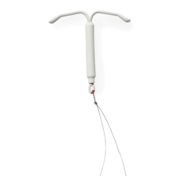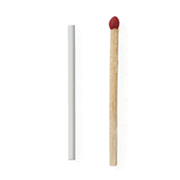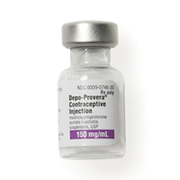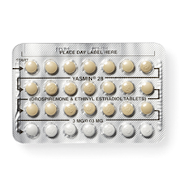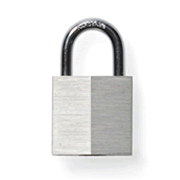While you're in there: Birth control for right after having a baby
Crib? Check. Lamaze classes? Check. Postpartum birth control plan? Make sure that’s on your checklist too.

Planning for a baby can be overwhelming. You’re dealing with prenatal care, setting up a nursery, making a birth plan, and simply preparing to be responsible for a new life. But the real work starts when you get that newborn home—and the last thing you’re going to want to worry about is an unplanned pregnancy.
It’s best to wait at least a year—some experts say two—after giving birth to get pregnant again. This gives your body time to heal and allows you to put all your energy toward caring for your new baby. However, many women become fertile again soon after delivery, so having a birth control plan before you take that newborn home could save you a lot of worry and hassle. Fortunately, there are a number of birth control methods that you can start using right after giving birth and that are safe to use while breastfeeding.
Speaking of breastfeeding… Did you know it can be a form of birth control?
Breast milk is the best source of nutrients for your baby and it also helps strengthen your baby’s immune system. Bonus: full or nearly full (un-supplemented) breastfeeding can work as a natural birth control method—though you have to practice it carefully for it to be effective.
If you are not breastfeeding or if you’re breastfeeding inconsistently, you can start ovulating again almost within a month after delivery. So if you’re not sure you’ll be breastfeeding, or if you’re planning to breastfeed but want to be extra covered, having an alternate birth control plan ready to go is a smart idea.
Here are some birth control options you can use while breastfeeding—and some of them you can start before you even leave the hospital!
The IUD
Both copper and hormonal IUDs are convenient, safe, and effective—and both kinds of IUD can be inserted immediately after delivery. When an IUD is placed immediately after delivery, the risk of expulsion may be slightly higher than if you wait several weeks, but the convenience of not having to schedule a time to go back to your health care provider may be worth it.
The implant
It is very easy and completely safe to get the birth control implant immediately after delivery. If you stay in the hospital for a few days, the implant can be inserted any time prior to discharge from the hospital.
Note: Based on the availability of trained providers and the details of your insurance coverage, sometimes you may not be able to get long-acting methods like IUDs and implants immediately after delivery. If that’s the case for you, consider using another method temporarily and making an appointment with a trained provider for four to six weeks after delivery.
The shot
In most hospitals it’s easy to get the shot prior to discharge, so it can be a great option for temporary or longer-term postpartum birth control. As the effects of the birth control shot last for 12 weeks, you can get it at the time of discharge and switch to one of the more effective methods at your six-week visit—it’s totally safe to get the implant or IUD inserted while the hormones from the shot are still in your system.
The progestin-only pill (a.k.a. POP or mini-pill)
If taken every day at the same time, POPs work for new mothers and aren’t a problem if you’re breastfeeding. We understand that it may be harder to remember to take the pills at the same time when you’re busy with a new baby, so you may want to download our birth control reminder app!
Not right now (a.k.a. abstinence)
Although notoriously difficult to maintain, this is a great method if you practice it properly. In fact, it can be 100% effective! You can start this method immediately after leaving the hospital, but it may not be ideal for the long-term.
Withdrawal (a.k.a. pulling out)
Contrary to popular belief, this method can actually work pretty well if used correctly and consistently. And if something goes wrong, it’s safe for new and breastfeeding moms to use levonorgestrel-based emergency contraception pills like Plan B One-Step.
Sterilization
If you’re sure you’re done having kids, surgical sterilization can be performed immediately after delivery and is a very effective method of birth control. Sterilization procedures are usually performed at the time of cesarean birth or within the first two days of vaginal delivery. In addition, always remember that male sterilization (vasectomy) is an equally effective option for your partner!
What about barrier methods?
It is better to avoid the diaphragm and the cervical cap for at least six weeks after delivery since the normal changes of pregnancy may mean these devices don’t fit as well. The vagina is usually messy after giving birth, so you may not want to use spermicide or contraceptive sponges either.
Condoms can be safely used during this period—both male and internal (though not at the same time). For condom-related accidents, emergency contraception can be used safely during this period.
How do you feel about this article?

Heat up your weekends with our best sex tips and so much more.
